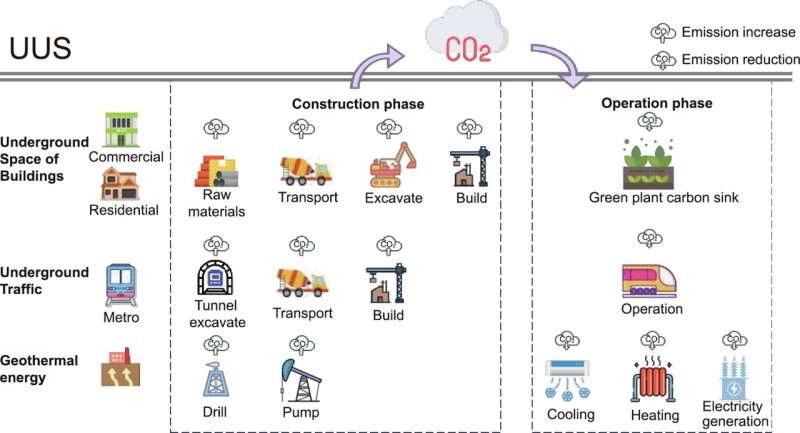
September 10, 2024 by Engineering Journal
Collected at: https://techxplore.com/news/2024-09-highlights-role-urban-underground-space.html
A study published in Engineering has shed light on the pivotal role of urban underground space (UUS) development in achieving carbon neutrality, with significant implications for sustainable urban development in China and beyond.
The research, conducted by a multidisciplinary team of experts from The University of Hong Kong, Huazhong University of Science and Technology, Shenzhen University, Leibniz Institute of Ecological Urban and Regional Development, and The University of Adelaide, presents a comprehensive analysis of the carbon emissions and mitigation potential of UUS systems.
As megacities grapple with the dual challenges of limited surface space and the urgent need to reduce carbon emissions, the construction industry, a significant contributor to global CO2 emissions, is under scrutiny.
The study, titled “Role of Urban Underground-Space Development in Achieving Carbon Neutrality: A National-Level Analysis in China,” and authored by Jiajia Wang, Huabo Duan, Kunyang Chen, Isabelle Y.S. Chan, Fan Xue, Ning Zhang, Xiangsheng Chen, Jian Zuo, offers a detailed examination of how UUS development can provide a sustainable solution to these intertwined issues.
The research reveals that while the construction of UUS, including building underground spaces and metro systems, is a considerable carbon emitter, the operational phase, particularly the use of geothermal energy, presents a significant carbon-sequestration potential.
In 2020 alone, UUS construction was responsible for emitting 547.2 Mt of carbon, yet the geothermal carbon sequestration aspect of the UUS system sequestered an impressive 170 Mt of carbon, underscoring the complex interplay between construction and environmental benefits.
Led by professor Xiangsheng Chen and professor Jian Zuo, the study takes a holistic approach, evaluating the overall carbon impact of multiple UUS types at a national scale. This top-down analysis of China’s UUS development over the past two decades provides a quantitative analysis of the performance of UUS in low-carbon sustainable development.
The study concludes that while the construction phase of UUS may not immediately reduce carbon emissions, the long-term operation of metro systems and utilization of geothermal resources can offer substantial carbon-sequestration potential.
The findings of this study carry significant implications for policymakers and urban planners, emphasizing the need to focus on developing low-carbon building technologies and improving the UUS development model. The research suggests that a long-term perspective is essential for leveraging the full potential of UUS in achieving carbon neutrality and sustainable urban growth.
Dr. Lin Zhu, the editor of Engineering, says, “This research provides a clear roadmap for how UUS development can be a strategic approach to balancing economic growth with environmental protection. It is a call to action for policymakers to consider UUS as a key component in their carbon reduction strategies.”
More information: Jiajia Wang et al, Role of Urban Underground-Space Development in Achieving Carbon Neutrality: A National-Level Analysis in China, Engineering (2024). DOI: 10.1016/j.eng.2024.07.012

Leave a Reply